#Until I solidify her design for the illustrations I want in the book
Explore tagged Tumblr posts
Text

Go on, take her hand. (Alts included below)
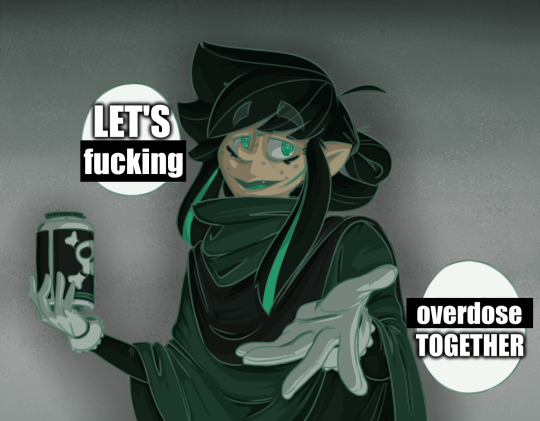
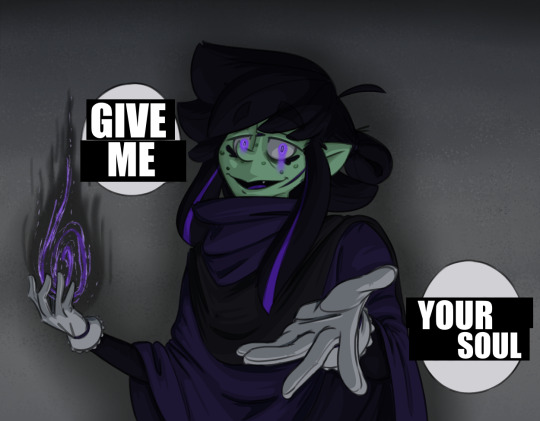
A redrew of a funny meme panel from Dungeon Meshi. Also a rare Tealpost that doesn't include a chapter of my book. It turns out that sometimes I just draw because I want to.
Why is Teal evil? Do not read into it too much (Unless you're reading my book in which case read into it a lot).
#OC#Original Character#Teal#Evergarden#Female#Half-Elf#Wizard#Drawing#Meme#Illustration#Artwork#What else can I tag this with?#Rare Coloured Teal Spotted#Her Palette is still a WIP#So is the rest of her technically#Until I solidify her design for the illustrations I want in the book
6 notes
·
View notes
Note
You are your top 5 Shadow agents

I don’t talk about the Agents as much as I should, even though I constantly try to stress their importance, because I’m working on essays for them individually. To be honest, I think about the Agents practically every day to the point I have a hard time separating my headcanons from the actual canon material, but I have to stay true to it, and the lack of material regarding them means that the only way I can truly talk about their characterization is by diving deep into the novels and taking notes, which I don’t have much time to do, and then finding the right books or moments to talk about, which is even more difficult.
This by no means constitutes my big thinkpiece on them, but it’s a start, and ultimately narrowing it down was a lot harder than I expected. This order is by no means final, if you asked me this question next week or next month I’d probably have a different answer, but it’s the 5 that I find myself thinking on the most.
Honorable mentions: Jericho Druke and Myra Reldon, who are incredibly awesome characters conceptually and who have great moments each, and whom I definitely think deserve big turns on the spotlight if the Agents ever get put on the spotlight again, but are held back by issues with their presentation and lack of prominence. Margo Lane, whom only just narrowly missed the cut because, as much as I like her and think she gets an underseved bad rep and definitely has great things going for her, I sadly have to concede isn’t as consistently great or well-written as she should be. Clyde Burke, whom I definitely like a lot based on what I’ve read and consider an integral part of the line-up, but haven’t read enough of the novels he’s in to really solidify him as one of my favorites just yet. And Slade Farrow, who is a bit too complicated to talk about superficially.
Allright, so here they are
Number 5: Burbank

As the center of all communications within The Shadow’s network and the only character in the series who is even more mysterious and elusive than The Shadow himself, Burbank is fascinating and the kind of character who simultaneously seems to be both begging for an in-depth exploration and yet who also should be dead last on the list of mysteries about the series we want spoiled, because nobody wants the mystery ruined. He’s a bit of cipher personality-wise compared to the other agents, but he kind of has to be, and I think it helps to illustrate the many forms the agents of The Shadow can and should take, that one of them is this total mystery whom we know nothing about and yet is so vital to the whole thing. And it’s interesting also because, for all the many variations we’ve had on The Shadow’s life and thoughts and feelings and etc over the years, Burbank has stayed more or less the same. Whatever variations he’s had in design aside, Burbank just is.
The pulps did often have moments where we would get to see moments that told us a little more about Burbank, gestures he did, capabilities he had and didn’t have, little details Gibson would sprinkle in to keep people fascinated. Several scenes with Burbank are almost presented like you’re watching a movie, in the way Gibson keeps describing his face being mysteriously blocked from view by objects or lighting, like not even in your mind you are supposed to know what he is. And it’s all the more fascinating because, unlike The Shadow, as far as we know, Burbank is just some guy who’s good with tech, who was only recruited in the 2nd story but apparently knows The Shadow from before it, and whom The Shadow entrusted with virtually every secret necessary to keep his operations running.
It’s kind of a sign as to how utterly neglected the agents are that, to this day, few writers who’ve ever touched The Shadow has ever come close to giving us any sort of explanation or backstory or anything on Burbank, and I refuse to believe these people had that much self-control. Of course I have my own ideas for Burbank, but even I would hesitate to put them on a story, because Burbank epitomizes that double-edged sword that comes with a solid narrative mystery. Burbank just is, and hopefully he will stay that way.
Number 4: Dr Roy Tam
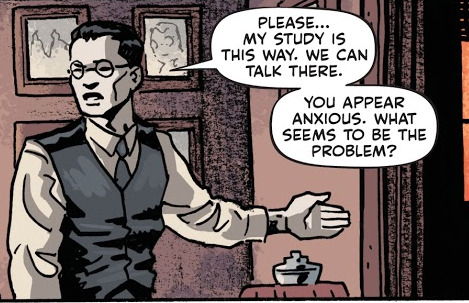
Mention of Dr. Tam meant much to Sayre. He was acquainted with Roy Tam, the Chinese physician. He knew that Tam was a power in Chinatown; one who worked for good
Unrolling a map, Tam showed the entire Manhattan area, studded with tiny dots in districts quite remote from Chinatown.
"These represent my outposts," he said soberly. "They are places, owned by Chinese - restaurants, laundries, curio shops, other places of business. In each of these places, I have a friend."
The Shadow understood. Dr. Tam was the motivating factor among the Chinese who adapted themselves to American ways. His mission was to create good will among races, to put an end to prejudice and superstition.
A newer and more sober spirit had replaced the old and dangerous festivities. Feuds in Chinatown were a thing of the forgotten past. Dr. Tam and his associates had done much to bring about the present sentiment; but there were persons - even among that group - who felt regret at the passing of old traditions.
Dr Tam is a remarkably layered character for one that only appears in about ten stories, and he’s one of the agents I’m most eager to discuss in-depth. He’s another one of those agents that Gibson introduced by tricking you into seeing him as a villain, as a Yellow Peril cliche, until he is revealed to be in fact a good man. Not just good, Roy Tam is presented as a powerful, influential and cunning Chinese man with a lot of assistants secretly working for him, and who is consistently presented as a progressive, pacifistic, benevolent civic leader and ally, even friend, of The Shadow.
Tam is very much westernized and the stories paint that mostly as a good thing, and this is one of the areas that I think could very much result in an interesting story that looks at the ramifications of his role, because of course not everyone is going to agree with his viewpoints, of course him being an advocate against superstition and tradition isn’t necessarily a good thing (and it’s not how Yat Soon, The Shadow’s other major Chinese ally, works, which puts the two at odds), and of course it’s a complicated situation, but the fact that Tam invites this kind of debate at all I think is something very interesting
Largely because of the movie, Dr Tam is one of the few agents of The Shadow who’s managed to sustain appearences in modern stories, and none of them have ever really went with his original angle as a powerful civic leader. Instead he’s been largely painted as either a scientist, like in the movie, a general practitioner, and a psychiatrist, and his age has been all over the board.
I prefer him in his original form but I also very much like the idea of Roy Tam being, like the Chinese supervillains he was created to be a subversion of, an incredible genius who’s got skills in all fields that can fit under the “Dr” part of his job and is also an incredibly capable leader able to unify splintered communities under a cause of unity and cooperation, someone who absolutely could be the adventuring genius so many other pulp heroes are, except he dedicates himself wholesale to his community and the fight against prejudice and the betterment of lives, even if he’s misguided or wrong at some of the causes he takes up. I really think this character could partake in really great stories if ever brought back.
Number 3: Cliff Marsland
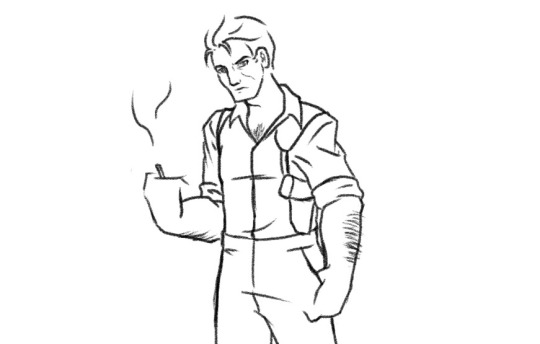
(Fan-art by @cryptixcreations)
Cliff may have actually been the first agent I really fell in love with based on concept alone, even before I read the stories he was a part of and started loving all of the others. He’s one of the few agents who has prior history with The Shadow and we get ever so tantalizing hints at his background that we ultimately never get to learn about in full. He’s the resident tough guy and underworld contact of The Shadow, which in any other series might have made him the biggest badass and a loner action hero who’s too cool for things like thinking and relying on others for help. But here, trying to be that only gets Cliff into trouble, and circumstances gradually morph him into the series equivalent of a Team Dad.
He was one of the agents who we got to see develop as a character. As he appears more frequently past his introduction, he grows from a headstrong, careless jackass, mostly interested in the action parts of the job, who “resigned himself to an adventurous career with violent death as its inevitable termination”, into one of the most reliable and capable agents, taking the lead during action scenes but otherwise fully defering leadership to Harry, and being the agent most likely to partake in gunfights and rescue The Shadow out of trouble, joining in missions like infiltrating circuses or high-society clubs and forming very strong friendships with Harry, Clyde & Hawkeye, who almost kills a man with his bare hands when he thinks Harry���s been killed. He’s the hardass, square-jawed ex-con who plays the reputation of a brutal killer, and is in reality a great friend, ally and husband (Arline has sadly only been mentioned in three stories), on top of being an invaluable fighter and secret agent.
Cliff could have easily been the protagonist of a long-running series all his own and that’s one of my favorite aspects of The Shadow’s agents. They are people with agency, goals and dreams and relationships and lives beyond the roles they play, they all have strengths and weaknesses and faults and positives that bring them much closer to us than The Shadow could ever be, with no end to the variety of roles they can take, and Cliff in particular is a character I’m very attached to.
I do hope that he eventually found peace in a quiet life with Arline once his business with The Shadow was over.
Number 2: Harry Vincent
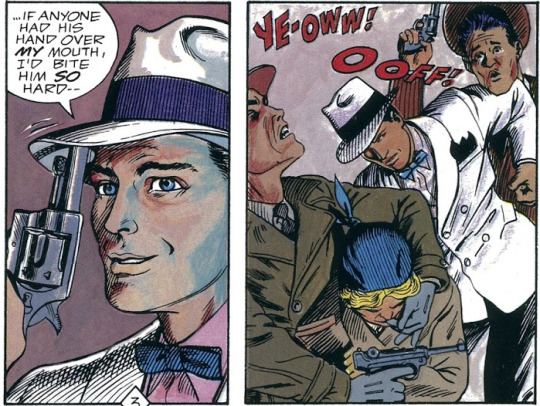
The Shadow as a franchise has been vastly worse off as a result of Harry Vincent being completely sidelined and mischaracterized in virtually every adaptation since, and the sheer love that Shadow fans hold for Harry purely may be the closest thing to a true universal opinion in the fandom.
Harry is a lot of things: the audience surrogate, the protagonist of much of the early stories, the leader of the agents in field duty, the dude in distress who gets kidnapped far more than even Margo, a hopeless romantic, an action hero, the one who gets sent to recruit agents because all The Shadow has to do is send Harry on an assignment and wait for him to come back with a new friend. He is a competent, resourceful, strong, extremely kind ball of sunshine who's got the potential for greatness, even if he can't see it.
And for this post I’m going to highlight this: Harry is, on top of all that, the ultimate embodiment of what The Shadow strives to protect, help and uplift. He is the living proof that The Shadow's mission has a good, positive effect in the world, long after criminals are brought to justice and plots are failed and victims are rescued, purely by the fact that he’s alive and helping others who were once like him. Someone who, despite having so much to offer, could have easily been swept away by the world’s callousness and cruelty, if The Shadow wasn’t there to rescue him and uplift him.
I liked The Shadow pretty much at first sight after seeing the character’s design and listening to episodes of the radio show, and my appreciation for the character grew after reading The Shadow’s Shadow, but it wasn’t until I encountered @oldschoolcrimefighters and her brilliantly informative writings on The Shadow and Harry that I not only fell in love with the series, but decided to do everything in my power to try and get other people to love it too and see the potential it has. I think a lot more people should at least be aware of why Harry matters.
Number 1: Moe Shrevnitz

I was honestly a bit surprised when I rounded up all of the agents to make this list and Shrevy here ended up in Number One, but in hindsight, it may have been obvious all along.
My reasonings as to why Shrevy is my favorite agent do get a bit too personal, especially because of something that happened to me as I was writing this post, so I’m putting it on a separate post here.
#the shadow#pulp heroes#pulp fiction#replies tag#harry vincent#moe shrevnitz#roy tam#cliff marsland#burbank
20 notes
·
View notes
Text
H.I.V.E. as Joseph Campbell’s monomyth
you may or not know this, but i am the holder of an entire english degree, and that means i know a thing or two about books and their structure
this is both a whim and a post that’s been sitting in my drafts for ages, and I figured I should post it—as the first book in a series, H.I.V.E. is a really interesting example of how the main character’s introductory arc can actually attempt to counteract his goals in the broader context of all the works
i can illustrate this by using joseph campbell’s monomyth. for those who may not know, the monomyth is a structure by the aforenamed critic, and i do believe his claim was that every single story fits in this metric (for reference, there are equally good arguments that every time you try to fit a story to this structure it will fall apart, and both are useful perspectives depending on your interests)
if you want to learn a little bit more about the monomyth, you can look at this link or just look at this really common graphic that everybody steals:
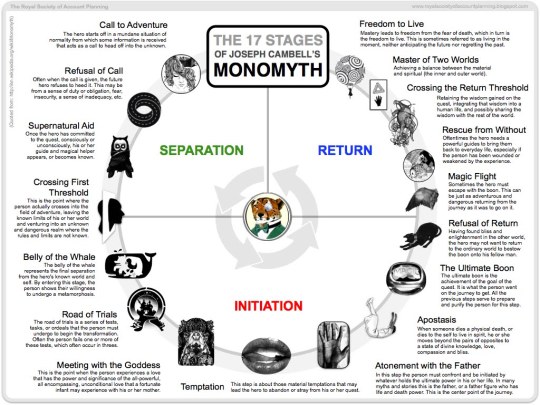
so, without further ado, here is a look at book one, The Higher Institute of Villainous Education
Ordinary World | These scenes take place in the flashback that occurs in chapters five and six. Otto lives at St. Sebastian's more or less happily, certainly as a prodigy, and we come to empathize with him as a fervent, Matilda-esque reader and a motivated trickster.
Call to Adventure | Shortly after waking up on a mysterious helicopter, Otto finds himself trapped on an island from which no one ever escapes, which is a challenge Otto himself almost immediately undertakes. (If we were to read the entire series as a monomyth, you could expand this element where Otto's "call" is not an escape, but a call to be a villain of the highest order.)
Refusal of the Call | Though Otto and his friends don't really have second thoughts about escaping, Otto refuses his call by participating in his classes and obtaining a sneaking suspicion that he actually belongs at this school and would do really well to continue his villainy. (However, if we were looking at the entire series as a monomyth, then we'd flip it. The entirety of the first book, as an escape narrative, could constitute Otto's refusal of his call to villainy.)
Meeting the Mentor | Dr. Nero's first Villain Studies class functions as the mentor scene—not because he is actively helping Otto escape the island, but he reinforces the idea that Otto and the other students are special and they are justified in doing the things that are within their power. By that same logic, Otto's escape mission becomes justified because he (presumably) has the guts and skills to do it. In Dr. Nero's book, that's enough!
Crossing the Threshold | Otto really begins to cross the threshold of escape when he forms his team: Wing, Shelby, and Laura. Not only does a team of four create an accountability to one another via conspiracy, but it also puts Otto in a position of leadership among peers for the first time. He is truly committed to the escape plan ahead.
Belly of the Whale | In this stage, Otto has to demonstrate that he has separated from the known world and is willing to undergo a great change. In a fun way, Otto’s separation from the world seems to contradict his potential for metamorphosis: Otto starts taking his classes and finds he excels at them. Studying villainy seriously both marks Otto as fully severed from his life in the orphanage as well as open to the ideas he is learning. To look at it in another light, Otto is trying to escape H.I.V.E. on principle; he isn’t actually opposed to being changed by his education there.
Road of Trials | Otto and his friends deal with a number of ordeals, including designing an escape route, building the device that will help them escape, and facing off against Block and Tackle, who seek revenge for the lunchroom incident. Beyond that, the obstacles continue into the actual escape itself, wherein Otto and friends must traverse the laundry room, navigate the ducts, bypass H.I.V.E.mind, and then get to the submarine dock.
Meeting with the Goddess | I have not one but THREE interpretations for this one. My first suggestion would be the conclusion of the Wing and Otto vs. Block and Tackle scene: it ends not with Otto's victory, but rather Raven's subtle, secret intervention in his favor. This is the first time the audience sees Raven after her first assignment from Nero, and so while she is implied to have been watching all along, this is a moment where Otto receives Raven's all-powerful and unconditional protection (even though she knows what he's been up to!) arguably resembles that of a Mother Goddess and ensures Wing and Otto's continued life.
My second idea is to read Violet, the man-eating plant, to be a carnivorous Mother Goddess. H.I.V.E.'s greenhouse has strong maternal associations. It is overseen by Ms. Gonzales (whose name, btw, is a variant on a name that means "battle" or "war"). The greenhouse itself is a dome, which is a womb-like shape, and the life that grows within basically fulfills the "Mother Earth" function at the school. Finally, Nigel likes the dome because it reminds him of working in the gardens with his own mom, which gives the planting and growing another feminine angle. Violet could therefore be the product of ultimate maternity: when Otto and Wing meet Violet for the first time, they see a plant that is a Maternal Vibe cubed, and it is the extreme power of this object that will threaten the school. That said, I will backtrack on this one easily because if anyone feels a particular expression of love from Violet, it would be Nigel, who is not the Hero who is doing this journey. In addition, while Violet is weaponized maternal power, it isn't nearly as powerful as option number three...
Escaping within H.I.V.E. is Otto's meeting with the mother goddess! The fact that H.I.V.E. is, physically, a volcano means that we can read it as a kind of maternal image itself. I mean, think about it—a volcano is pretty much the shape of an upside down vagina! When you pair that with the fact that Otto & Co. spend their time crawling through the warm, womb-like laundry room and push themselves into H.I.V.E.mind's central core, you can read that as H.I.V.E. literally birthing Otto as a villain. The thing that really solidifies this point is that Meeting with the Goddess is associated with meeting an all-powerful, unconditional love (as the graphic I'm using says) reminiscent of that which an infant might feel from its mother, which does not literally make sense in a comparison of a volcano and a pre-teen but does make sense when you consider that the volcano is a force of nature that is giving Otto the space and resources to experiment with his villainy and mischief as he pleases. Even though Nero shuts down Otto's escape attempt, the fact that Otto is given the space and time to learn this lesson on his own and explore a new identity that is validated, even if his actions aren't, gives Otto that element of spiritual connection with the world around him.
Temptation | Otto’s temptation to leave his quest behind appears both in his regret at leaving Nigel and Franz behind, but is much more evident when Otto is confronted with the need to kill H.I.V.E.mind, and he can’t do it.
Atonement with the Father | At this point we learn that the ultimate power in Otto’s life has been Dr. Nero all along. Otto’s plan has been futile all along, and Dr. Nero proves his life-or-death power by both forcing the students’ physical submission as well as asking Wing, Otto, Laura, and Shelby what, exactly, they think is waiting for them back in the real world. Unable to challenge this power, the students are reintegrated back into their normal lives.
Apostasis | Otto experiences the “spiritual death” of humiliation in the wake of his failed escape attempt, but this feeling is interrupted by the sudden arrival of Violet, our favorite man-eating flower. Instead of failing again, Otto is integral in the planning and execution of the assault against Violet, giving Otto a villainous rebirth back into competence.
The Ultimate Boon | After ultimately defeating Violet and escaping from Raven and Nero, Otto and Wing have the chance to escape H.I.V.E. once and for all on a helicopter. (One could say that Otto has “earned” the right to escape now that he has defeated Violet.)
Refusal of Return/Rescue from Without | However, Otto chooses not to leave because Wing asks him to stay until they solve the mystery of his mother’s murder. In this scene, though Otto considers Nero’s point that he will never reach his full potential out in the real world, it is Wing’s friendship that pulls Otto back into his normal life at H.I.V.E.
Crossing the Return Threshold/Master of Two Worlds | Otto returns to the life of H.I.V.E., now more prepared to be a villain and with the benefit of Dr. Nero’s respect—he will receive no punishment for his escape attempt due to his heroism during the Violet incident.
Freedom to Live | Otto’s freedom to live is, in fact, tainted. He believes he may have an uneventful few months coming up, but that freedom is tainted by the fact that Overlord is explicitly planning to kill him someday...
#joseph campbell#monomyth#meta#analysis#thoughts#otto malpense#max nero#raven#laura brand#wing fanchu#shelby trinity#nigel darkdoom#violet#franz argentblum#did i make this post just to argue that h.i.v.e. is symbolically a vagina?#yes#yes i did#and god help us all because i am RIGHT#h.i.v.e.#higher institute of villainous education#book one#spoilers#book one spoilers
10 notes
·
View notes
Text
1998 Metal Gear Solid art commentary from Yoji Shinkawa (revised translation)
Source:http://web.archive.org/web/20050109031649/http://www.konamijpn.com:80/products/metalgear/art/index.html
The following is a translation of various artwork commentary by Metal Gear Solid illustrator Yoji Shinkawa that were posted on the game’s official Japanese website on July 9, 1998. These pages remained online until 2008, when Konami decided to relaunch the website in order to promote the digital download release of the game on the PlayStation Store.
I posted an earlier translation of these blog posts on March 8 of this year (2019) that was missing most of the illustrations being described, since the image files were not archived. I’ve since found the missing image files on another website and took the liberty of revising my translation to fix mistakes or clarify certain statements. I’ve tried to edit the original blog post, but for some reason tumblr didn’t allow me to upload any new images, so I decided to delete it and post the revision as a new blog post.
I’ve also found the images of the scratch Metal Gear REX model sculpted by Yoji Shinkawa that were uploaded on the official site, but unfortunately they were watermarked by a fansite that copied them back in the day. With that said, it’s still better than nothing, so I added them at the end of this blog poster.
Unfortunately, I still haven’t found any of the photos used on the seventh blog post, so that will still remain untranslated for the time being.

Interviewer: First of all, it’s a pleasure to talk to you Mr. Shinkawa.
Shinkawa: Please to meet you too.
Interviewer: I’ll start by asking about the game’s protagonist Solid Snake. What kind of details were you paying attention to when designing his character.
Shinkawa: Well I talked about this before in Konami Magazine Vol. 2, but there were two Metal Gear games prior to this one, so I struggled to find a balance between them. The Snake in the original Metal Gear looked like a young musclebound guy, while in Metal Gear 2 he was more of a bitter middle-aged man. This time Mr. Kojima’s image of Snake was one of having a tough and athletic body like Jean-Claude Van Damme combined with the middle-aged nature of someone like Christopher Walken. As a result, he became something of a middle ground between the two.
Interviewer: I see. What was your work after Snake’s image was decided on?
Shinkawa: The truth is I had trouble designing his costume. At the beginning I was thinking of a conventional military uniform in blue urban camo. But then I thought it might had been a bit too careless to have Snake swim underwater wearing such a uniform. Since the story takes place in the near future, he ended up wearing a costume made of leather and waterproof material.
Interviewer: It’s an amazing attention to detail that you kept in mind Snake’s infiltration route when designing his costume. So there’s a scene where Snake is underwater? What happens if the Ninja lands in a pond or something?
Shinkawa: What would happen? Huh... He would spark up and then yell something like “Water! My weakness!” (laugh) Just kidding.
Interviewer: (laughs) I guess not.
Shinkawa: It’s hard to know when it comes to Mr. Kojima though...
Interviewer: Don’t worry about it. By the way, is there any behind-the-scenes stories about the game’s development.
Shinkawa: Yes. It’s not much of an inside story, but I drew Ninja in a train.
Interviewer: During a train ride?
Shinkawa: Yes, I drew him while riding a commuter train. I was stationed at Osaka at the time. Most of the people there not friendly, so I would spent time observing the college girls.
Interviewer: That’s pretty nice.
Shinkawa:I guess so. But the friendliness here is good though. But Tokyo doesn’t have such a thing, so it feels a bit lonely. How I should say this, but there’s something that could be described as “enjoying the reaction of people watching in my direction” that could be seen not just over there, but here too.
Interviewer: So that’s how you train your sense of observation!
Shinkawa: No, that’s not what I meant. (laughs)
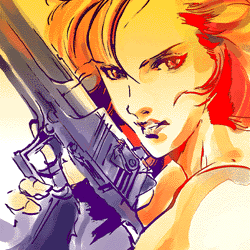
Interviewer: Is there a type of woman that you like?
Shinkawa: I wonder about that.
Interviewer: I’m sorry, that was such a trite question. Let me rephrase that. Is there a particular celebrity that you like?
Shinkawa: I guess I have no choice. My type would be someone like Shinobu Nakayama.
Interviewer: Is that so? Personally I’m a fan of Yuki Uchida if you’re curious to know...
Shinkawa: Yeah, she’s not bad.
Interviewer: Ah!
Shinkawa: Well, let’s put that subject aside. The truth is that the character of Mei-Ling was actually modeled after Nakayama herself. I used to watch her drama series.
Interviewer: Ah! That’s such an interesting thing to learn. Now that you say that, Mei-Ling really does resemble Nakayama looking at her closely, doesn’t she?
Shinkawa: Mei-Ling was written to be a bubbly college girl. She tends heavily to my taste, since she’s in the right age range and has my ideal image.
Interviewer: That’s nice. Having your preferences tied directly to your job.
Shinkawa: It’s not just mine. The character of Dr. Naomi Hunter was made to suit Mr. Kojima’s preferences too.
Interviewer: I see. Huh? At this rate, will you have a type for everyone?
Shinkawa: That wasn’t the intention, but... (laughs)
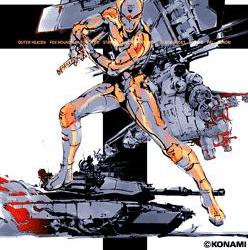
Interviewer: When was this drawn?
Shinkawa: I think it was around the end of last year. Huh? Around six months ago. Time sure fly quickly! I drew it for a magazine ad.
Interviewer: I heard the Ninja was your idea.
Shinkawa:That’s right. But originally there was a trio. They would say something like “Worya! Trinity Attack!” and they were going to have random kanji characters on their backs such as flame (炎) or horse (馬) without any particular significance.
Interviewer: “Fire” doesn’t seem so unreasonable, but why “horse”?
Shinkawa: I’ve mentioned “horse” as a joke, but that sort of thing happens very often, doesn’t it? When it comes to the image of Japan from a foreign perspective, while the outline is the same, the finer details differ. I like that kind of thing. The finalized design of the Ninja is and isn’t a ninja. If nobody told you he was a ninja, you wouldn’t think of him as one. But if someone points out that he must be a ninja because he has some ninja-like parts if you look at him closely, then you might think of him as one.
Interviewer: Is that so? That’s the Shinkawa magic!
Shinkawa: (laughs) What’s that?
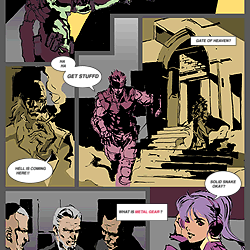
Interviewer: I think I’ve seen this artwork a long time ago.
Shinkawa: It was first published around a year ago.
Interviewer: I see. So why did you draw it like an American comic book?
Shinkawa: Well, in reality I was going for a BD-style. Doesn’t it look like that?
Interviewer: I’m sorry, but what does BD mean?
Shinkawa: It stands for bande dessinée, which is the term for graphic novels in France. It means “sequential art���.
Interviewer: Huh, I did not know. So, is there a particular reason why you chose the BD-style?
Shinkawa: Of course! There is a reason. While talking to Mr. Kojima during the early stages, he said “Alright! Let’s turn Metal Gear into B.D” as a conceptual image. So I drew a few illustrations like that. This one was used as promotional art.
Interviewer: I see. So that’s the reason. And this one was perfect for a promotional artwork. Huh! Why is Gatse Becker [the BCPD chief from Policenauts] there?
Shinkawa: That’s not him. (laughs) It’s the Secretary of Defense [Jim Houseman]... Jeez... (While saying this, Shinkawa’s mouse keeps hovering on Mei-Ling for some reason.)
Interviewer: (nervous face) Uhh... Mei-Ling’s skirt seems awfully short... By the way, will you be able to shake the female characters’ breasts like in Policenauts?
Shinkawa:...That’s classified information!
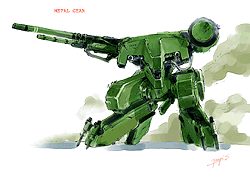
Interviewer: Well, here’s REX. Is there anything particularly different about this Metal Gear model?
Shinkawa: The Metal Gears in the previous two games had weak legs, so this new version has a strengthened lower body. During the initial planning I came up with several illustrations and settings, but the finalized version was settled pretty quickly.
Interviewer: How so?
Shinkawa: Since it was going to be turned into a polygon model, I made it into an actual model in order to solidify its conceptual image and verify its functions.
Interviewer: Is that so? Please show the model to me.
Shinkawa: Of course! REX was designed purely as a weapon, so it’s not exactly a heroic mecha. I decided on a dinosaur-like design like this one, since it conveyed a scary and grim image.

Shinkawa: There are three types of enemy soldiers shown here. From left to right: we have the light infantry, the heavy infantry and the arctic warfare soldier (nicknamed Yukinko by the developers). There’s also a gas mask-wearing fourth type.
Interviewer: Were you given any sort of references to use?
Shinkawa: I had books and photos that were given to me by Mr. Motosada Mori (MGS’s military advisor).
Interviewer: All the enemy soldiers have their faces covered up. Was that decided because they were terrorists?
Shinkawa: That’s certainly something that could be think of, but there’s actually more important reasons.
Interviewer: Huh? Explain!
Shinkawa: Simply put, we needed to reduce the number of polygons.
Interviewer: Is that really the reason?
Shinkawa: If you want to draw faces on your characters, you have to use quite a few polygons to get them to a satisfactory level, which ends up consuming too much resources. When taking into consideration the game as a whole, you got no choice but to trim certain parts. It’s a shame, but in the end I think the finalized designs suit the enemy soldiers better.
Interviewer: It’s a matter of balancing supply and demand. By the way, I really like the helmet worm by the Heavily Armed Troops. You don’t see them often in the game though.
Shinkawa: Well that helmet is an original design. Like everything, I try to keep things intuitive for game-playing purposes. The enemy soldiers are color-coded from left to right: brown, green and white, plus yellow for the gas mask-wearing soldiers.
Interviewer: There are indeed a variety of schemes. By the way, the arctic warfare soldiers are layered with clothing. Snake spends most of the game in arctic environments, but he isn’t wearing that much. Why is that?
Shinkawa: He’s wearing a high-tech suit.
Interviewer: You said it so bluntly... (laughs) One last nitpicky question. Who does the laundry in the base?
Shinkawa: They use a laundry machine. (laughs)
Metal Gear REX Model Photos
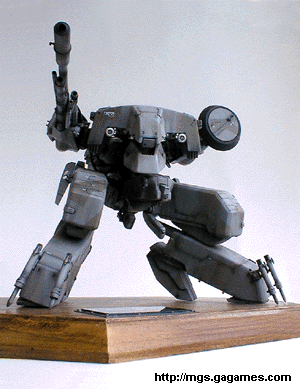
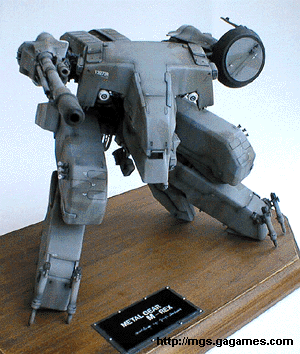
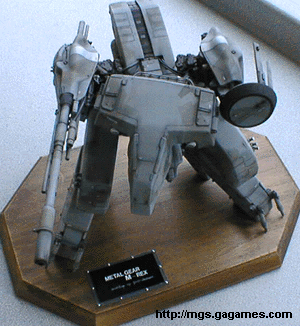
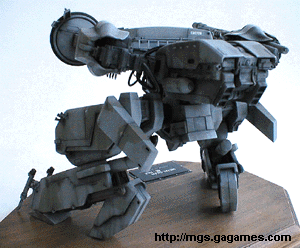

13 notes
·
View notes
Text
Random Werewolf Fact #35 - The Beast of Gevaudan, and What Isn’t a Werewolf Legend
The Beast of Gevaudan is easily one of the most popular werewolf legends. Movies, TV shows, books - tons of things are based on it, and new ones pop up every few years.
But here’s the problem - it isn’t really a werewolf legend at all.

(MTV’s Teen Wolf series certainly had a take on the Beast of Gevaudan)
Before we dive into why it isn’t, let’s first look at what exactly the legend is. In brief, because going into too much detail would make this even longer than it already is, and that’d be totally unpalatable.
In 1764-1765 in France, a creature called the Wild Beast of Gevaudan “ravaged several districts,” hunted by a detachment of dragoons, with a bounty of a thousand crowns for its death. It was said to,
[H]ave devoured more than a hundred persons. Not merely solitary wayfarers were attacked by it, but even larger companies traveling in coaches and armed. (Summers 235)
A lot of what we have today about the Beast of Gevaudan comes from extrapolations of the legend, misinformation, and retroactive changes to it based on the modern miscategorization of it as a werewolf legend.
So why am I saying it isn’t a werewolf legend?
Firstly, the beast is only ever described as some kind of unknown creature.
Secondly, and very importantly, it never changes shape beyond speculation.
There were claims made, either then or recently, that the creature was a “warlock, who had shifted his shape” (Summers 236), and one account from a supposed eyewitness who heard it speaking.
There is no particular reason or purpose behind this creature being a wolf - because it was not a wolf. It simply has absolutely no hallmarks of a proper werewolf legend, beyond the fact that the beast is shown to be intelligent (”With mysterious skill the beast baffled and even spurned its pursuers” [Summers 235]).
The Beast of Gevaudan was physically described by various historical sources, and speculated to be any of the following things:
A “panther”
A “hyena”
“the offspring of a tiger and a lioness” (and we know those are possible!)
It was described as having “most formidable” teeth, which is wolflike. But it was also described as using its tail to fight. “With its immense tail it could deal swindging blows.” Along with being able to jump to tremendous heights and run with “supernatural speed,” it is described as stinking. “The stench of the brute was beyond description” (Summers 235). Yeah, wolves aren’t skunks, so I think we can write another point off toward “was it a wolf?”
There were other instances of people speculating it was a werewolf later in the legend’s history, so not actually at the time when these things were happening. An anonymous writer not even from the time period (great source, right? Very reliable) made some random claim off the top of his head that it must’ve been a werewolf because he once saw an engraving where it was eating a girl, and werewolves likey the girl flesh (this guy must’ve read a very limited range of werewolf legends, though).
But the thing ate everyone regardless of age, sex, or what-have-you, and we have multiple accounts of it eating all kinds of people, so that’s about as helpful or likely to hold up as a bucket with holes in it.
And then we can turn to the illustrations...

(18th-century engraving of the Beast of Gevaudan, now called Lycopardus Parthenophagus, or basically “panther-wolf”)
Oh yeah I see wolves and werewolves that look like that all the time!
Does that remotely resemble a wolf to you? (note: don’t ask that to people designing stylized wolf models for video games, especially WoW, or most people who design werewolves in Hollywood)
Look, I get it. The medievals were super terrible at artistically portraying basically anything. Pick up 90% of bestiaries and they’re full of laughs.

(Cutout from a bestiary entry on wolves. But at least these weird little cuties kind of resemble wolves, you know, in the smallest amount?)
Here’s another Beast of Gevaudan...

(So is she saving herself from getting her hair licked or from getting mauled? More at 11)
Arguably a little more wolfish by medieval standards? Still not doing it for me.
So what’s the problem here?
For a long time, scholars got triggerhappy categorizing things as werewolf legends, vampire legends, dragon legends, etc. - trying to find a way to fit everything into a certain category, because humans seem to have an irresistible need to categorize everything (just look at TV Tropes).
But not all of these categorizations are true. That, and they were trying to make these fields into a thing, trying to prove there was enough material for something like “werewolf studies” to exist, so they got pretty ridiculous about it.
Before someone jumps in with “but Mav, Jean Chastel killed it with a silver bullet!” I’m going to cut you off at the pass, because we have no actual reliable source stating that this is true.
And also other sources say one Monsieur Antoine killed the beast, not some guy named Jean Chastel, so we have conflicting sources about this legend absolutely everywhere.
About the “silver bullet” thing: Until I am given a small mountain (or honestly at least 2-3) of verifiable sources from the actual time period, I 100% stand by that this was retroactively inserted into the Beast of Gevaudan legend by someone who watched The Wolf Man movie, and then the completely fake “source” was made and thrown out there because some scholar wanted to be the first one to find it (i.e., make it up).
And even if it was true, you know what? That wouldn’t make it more of a werewolf legend. Because guess what? Werewolves in literally every other legend ever, everywhere on the face of planet earth, aren’t sensitive to silver like that.
So, no, that is not a property of folkloric werewolves and if true (which I still hold that it is not), does absolutely nothing to nudge the Beast of Gevaudan closer to the “werewolf legends” category.
Because the Beast of Gevaudan is not a werewolf legend. It meets not even a single requirement necessary to be called one. It’s a cool legend, sure, and people have a relatively easy (arguably; I’m not a huge fan of a lot of the media, but some of it is alright) time turning it into a werewolf story, but that doesn’t make the historical legend about a werewolf. Any werewolf media that uses it needs to be aware of that.
This applies to a lot of other “werewolf legends,” too, such as the trial of Peter Stubbe, for a whole lot of reasons. It’s simply a miscategorization. A mistake. And it is one that needs to stop being further solidified, despite being a pretty literal error, in the scholarly world.
Don’t get me wrong, though, the legend itself is pretty hardcore (and horrible, because those people did actually die, you know). It’s just not a werewolf legend.
Note: All quotes in this article are from The Werewolf by Montague Summers, cross-examined with various other sources. But any actual quotes are from that book.
(If you like my werewolf blog, be sure to check out my other stuff!
Patreon --- YouTube --- Wulfgard --- Werewolf Fact Masterlist --- Twitter)
#werewolves#werewolf#werewolf wednesday#werewolfwednesday#random werewolf fact#folklore#lycanthrope#lycanthropy#wolfman#wolfmen#beast of gevaudan#the beast of gevaudan
73 notes
·
View notes
Text
Sensor Sweep: Skullsplitter Dice, Fantasy divisions, Future Firearms, Samson Pollen
Fiction (DMR Books): I have a real attachment to the supernatural tales that appeared in what is often called the golden age of the English ghost story. Ranging from around 1880 to somewhere in the 1920s its boundaries are as vague as its achievements are remarkable. For a time, in that difficult to imagine world in which fiction had yet to solidify into specific genres, any author might try his or her hand at a tale of the supernatural, writing primarily motivated by the desire, as M.R. James put it, to make the reader feel “pleasantly uncomfortable.” While dozens of authors who would later distinguish themselves
Genre (Perilous Worlds): Sometimes it seems like the myriad sub-divisions of the fantasy genre cause more confusion than clarity. Terms like Epic and High Fantasy are often used interchangeably, labels like Sword-and-Sorcery and Dark Fantasy are commonly applied indiscriminately, and books with seemingly nothing in common can be found right next to one another in the fantasy section. A novel set in modern times featuring a heroic, magic-wielding protagonist and one set in a medieval-flavored secondary world devoid of the supernatural and concerned with the selfish adventures of an amoral rogue are both works of fantasy – but if only one of those sounds like a book you’d want to read, it helps to be familiar with the broad categories of contemporary fantasy.
Weapons (Future War Stories): Any leap forward in design, fashion, and/or technology can be greeted as the harbinger of the future or a laughing stock by the masses. While this can be applied to personal electronics, clothing, and architecture; it can also be applied to firearms. During the 1980’s, the western nations invested heavily in advancing weapons technology to overcome the numerical superior of the Warsaw Pact. This was the time of cutting edge weapon system like the Apache attack helicopter, the M1 Abrams, the Steyr AUG, night vision, laser sights, and the H&K G11.
Weapons (DMR Books): Hank Reinhardt would have turned eighty-five today. Though I never knew him personally, Hank affected my life in some unique ways and he shall receive due honor from me for that. If you don’t know who Hank Reinhardt was, check out the hyperlink above or read on.
I first learned of Mr. Reinhardt when I bought the DAW sword and sorcery anthology–quite possibly the greatest ever published–Heroic Fantasy. Hank was co-editor of that book along with Gerald W. Page.
Art (CBC News): Semi-nude women, sadistic soldiers, and animal attacks aren’t exactly high art.
Yet those were themes that appealed to the millions of men who read “sweat magazines” — adventure digests sold across North America from the 1940s to the 1970s.
Publications like Man’s Story, World of Men, and Man’s Epic weren’t exactly pornographic — but were the opposite of politically correct.
Authors (Socialist Jazz): Theodore Sturgeon was by all accounts a confounding personality, genial, personally irresponsible, questioning many of the more basic matters of human relations, perception and emotion, and a man who could certainly write a sentence…and then be hung up by how badly he’d done so for years-long writer’s blocks. And yet managed to be very prolific over a long if troubled career.
Art (Mens Pulp Mags): Simply put, Samson Pollen was one of the greatest of the many artists who provided illustrations for the men’s adventure magazines (MAMs) that flourished from the early 1950s to the late 1970s.
My publishing partner Wyatt Doyle and I had the good fortune and the honor of working with Sam on two books featuring his artwork before he passed away in December of 2018.
The first, POLLEN’S WOMEN: THE ART OF SAMSON POLLENwas published last year. It quickly became one of the best-selling books in our Men’s Adventure Library series, which features classic MAM stories and artwork.
Fiction (Perilous Worlds): If you love The Hobbit and The Lord of the Ringsand want to follow the third road of the J. R. R. Tolkien fantasy triad, these first words of The Silmarillion might trick you into putting the book back on the “May Read … Someday” shelf, right beside War and Peace and Les Misérables.
I’m making a plea for you not to shelve it. Or for you to reach up to the shelf and take down Professor Tolkien’s 1977 volume of the Elder Days of Middle-Earth and try again. Too many people have let The Silmarillion’s reputation for difficulty—and its actual difficulty—keep them away from discovering what may be one of their favorite works of fantasy.
Fiction (Tellers of Weird Tales): A month ago I wrote about Vikings and other medieval subjects on the cover ofWeird Tales, and out of that I received a couple of comments from readers about Viking fantasy stories. That got me thinking that there may be a missed sub-sub-genre of fantasy and science fiction dealing with those men and women of the north, with their winged and horned helmets, long, braided hair, conical breastplates, and raiments of hide and fur. So here is a first shot at stories of Vikings and Norsemen, with some also of Saxons, Geats, Goths, and other early northern Europeans thrown into the mix.
History (Men of the West): The Turk has long been known as the “sick man of Europe,” and the story of the Ottoman Empire for a hundred years has been a tale of gradual dismemberment. Thus it is no easy matter for us to realize that for centuries the Ottoman power was the terror of the civilized world.
It was in 1358 that the Ottomans seized Gallipoli, on the Dardanelles, and thus obtained their first footing in Europe. They soon made themselves masters of Philippopolis and Adrianople. A crusading army, gathered to drive the Asiatic horde from Europe, was cut to pieces by the Sultan Bajazet at Nicopolis in 1396. On the day after the battle ten thousand Christian prisoners were massacred before the Sultan, the slaughter going on from daybreak till late in the afternoon. The Turk had become the terror of Europe.
Authors (A Shiver in the Archives): The legend* has altered in the retelling, from a slip found in Robert E. Howard’s wallet after his suicide in June 1936, to it being the last thing Howard typed on his typewriter before going out to his car where he shot himself in the head. The couplet is now legendary:
All fled, all done, so lift me on the pyre; The feast is over and the lamps expire.
Rusty Burke published an article “All Fled, All Done” in The Dark Man: The Journal of Robert E. Howard Studies (Winter 2001), in which he identified Howard’s source for the final line of the couplet, a poem titled “The House of Cæsar” by Viola Garvin, which appeared in a poetry anthology Songs of Adventure (1926), edited by Robert Frothingham. Each of the five stanzas of the poem ends with the line “The Feast is over and the lamps expire!”
Gaming (Table Top Gaming News): These little gems are one of my favorite things, and so when Skullsplitter Dice asked if I’d like to review one of their sets, and not only that, their first-ever limited edition set, I was like, “(censored) YEAH!!” So, they sent me some dice. I rolled them around a bit, and I’m here to let you know about it.
It’s time for another TGN Review. This time, it’s the Huntress Limited Edition Dice from Skullsplitter Dice.
Cinema (Kairos): In my work as a freelance editor, I’ve noticed a common tendency among the current crop of science fiction authors to write books as if they’re writing movies. That practice is understandable since most science fiction and fantasy novels published after 1980 suck, and therefore today’s authors are disproportionately influenced by film.
However, writing a novel by playing a little movie in your head and transcribing what you see in your mind’s eye hobbles the final product. Because this generation of authors don’t read as much as their forebears did, few of them realize the storytelling advantages that books have over movies.
Fiction (Cirsova): Per Michael Tierney, the original fragment that Burroughs wrote was just found this morning.
Apparently, Danton Burroughs had sent it to be transcribed by Bill Hillman of ERBzine.com, who has announced today in a thread on the ERBzine facebook group that it is still in his possession!
Danton sent me this ERB handwritten script. I typed it out and returned the typed copy to him. He offered it to a few writers to see if they would be interested in finishing it. I still have the handwritten copy plus my transcription.
We have updated the copy in the original piece.
Cirsova’s spring issue featuring Young Tarzan and the Mysterious She is available for digital pre-order now and physical pre-order in February.
Fiction (Glorious Trash): I had a tough time with this third volume of Conan. In fact I read it over a year ago, but at the time I found myself skimming the collected stories, to the point that when I “finished” the book I didn’t have any idea how to review it! So I waited a while until getting back to the series, only to find my interest again sagging at times.
Sensor Sweep: Skullsplitter Dice, Fantasy divisions, Future Firearms, Samson Pollen published first on https://medium.com/@ReloadedPCGames
0 notes
Text
Behind the Stationery: redcruiser
I fell in love with Heidi’s yoga calendar and cocktail greeting cards at the National Stationery Show this year, so I’m really excited to feature redcruiser‘s behind the stationery story today on the blog! Heidi shares how a blog feature jumpstarted her stationery shop, what measures she’s taken to maintain a balanced life, and what inspires her most in Minneapolis. —Megan Soh
Before I started redcruiser I was a full-time graphic designer. For over 10 years I worked at a variety of different design firms and companies, including Starbucks Design Group in Seattle and Little (design firm) in Minneapolis. Both Starbucks and Little were great places for me to explore my illustration and introduce them into many design concepts. While I loved working in a team based environment and as I was nearing the due date of my second child, I was beginning to realize I couldn’t do it all…and do a good job of it all – something had to give, so I decided to leave full-time work to be home with my little girls.
While at home I had a lot more time to do the things I love – cooking, gardening, and drawing in my sketchbook. Before long I had filled a sketchbook with drawings from my garden with no real intention – but I really liked the feel of that sketchbook so I turned a lot of those sketches into illustrations and made a few calendars, art prints and greeting cards and started a little Etsy shop.
I sent an email to a design blog I read daily called design*sponge with photos of my garden calendar (of which I had 10 made). My calendar was posted on design*sponge the next day and my Etsy store had hundreds of orders, and that really began my transition into stationery. I’ve continued to approach stationery in this same organic way – I draw things I am interested in which keeps it authentic and fun for me.
I still do a lot of freelance design and illustration so I’m able to be flexible on what I am working on and it keeps things fresh and new. My work days are so different each day, which is what I love the most about this career I have created — every day is different. It can be a little chaotic sometimes but usually I try to start the week off by planning out my schedule looking at different due dates for the week and planning around those using my weekly planner.
Once I have a loose plan in place for the week, I really try to stick to my list and work through the various tasks or projects. From November until end of December, I am busy packing and unpacking for different maker or farmers markets as well as filling online and wholesale orders. From January to March, I try to devote the majority of my time to concepting and illustrating next years’ collection. Last May, I exhibited at the National Stationery Show with the help of my husband so there was a lot of preparation for that.
The past two years we have exhibited at the NY NOW show in August so the amount of work in the spring and summer months usually depends on what trade show we are doing. I try to exhibit at a few farmers markets in the summer as well — Mill City Farmers Market is a great little market downtown that I love to do.
I love being able to be home with my kids in the summer. This past summer I moved my studio back into our newly renovated basement of our Golden Valley home. I had a studio a few miles away for the past few years but found that I was slowly slipping back into that feeling of having too many things going on and not being able to do a good job at all of it. Making sure I reevaluate and make good choices in how, where, and when I work has been one of the most important things I do running this business.
At this point in my life I like keeping it small (mainly it’s just me), but sometimes I collaborate with other designers and design firms or hire my brother, husband or friends to help me out with packaging. I use a great local book keeper to help with the business end of things — delegating the parts of the business that are not my strong suit is a great way to keep things running efficiently!
Since I spend a lot of time by myself, I love to get out to farmers and maker markets in the city. It is so great to talk with my customers and make personal connections with them. Minneapolis has a really great maker community — there are so many talented, friendly and supportive people making some really great things here! It is so fun to connect with them at all these different shows and markets and talk about this unique kind of business we do. I try to be really thoughtful about the products I create. I don’t want to just be making stuff to make stuff. I try to create products that aren’t out there and, most importantly, products that I would use in my life. All of our paper products are printed locally on 100% PCW recycled paper and are assembled by hand in my MN studio. Whenever possible, organic materials are sourced and we use a minimal amount of packaging for shipping.
My design process always starts out with a sketchbook and pen. I love spending time in my sketchbook and drawing things that are a part of my life. I love to travel throughout the year and be out in nature to get some fresh perspective. A trip to California always brings so much inspiration! My family and I usually try to spend a few weekends camping or renting cabins in the summer in northern Minnesota as well. The North Shore and Burntside Lake in Ely, MN are my top picks. I also find inspiration doing things I enjoy, like cooking, gardening and entertaining. After I’ve given myself some freedom to explore I usually look for connections in my sketchbook and begin narrowing down my ideas into a few collections.
I use a lot of different materials when creating my illustrations – paint, ink, pencils, charcoal and lots of different textures. Then, I scan everything in and finish up my illustrations digitally. Once I have some ideas solidified I like to show them to my husband (he’s also a graphic designer) and friends to get an idea of what they think — a kind of very loose focus group. After I have decided on designs, I start working with some great local printers I have developed relationships with. It has been really helpful to have these relationships; it’s great to work with a printer who can print samples, do small runs or large runs without having any difference in the quality.
I create a new catalog only once a year — it just has to do with my personal goals and what is the right amount of work for me right now. It’s really easy to get caught up with thinking there is a right way to run a stationery company with all the information we have with social media, but really there are so many ways to work in this creative field it’s all about finding the balance that is right for you! All photos courtesy of redcruiser.
Want to be featured in the Behind the Stationery column? Reach out to Megan at megan [at] ohsobeautifulpaper [dot] com for more details.
from Oh So Beautiful Paper http://ift.tt/2kiqa1Y via IFTTT
0 notes